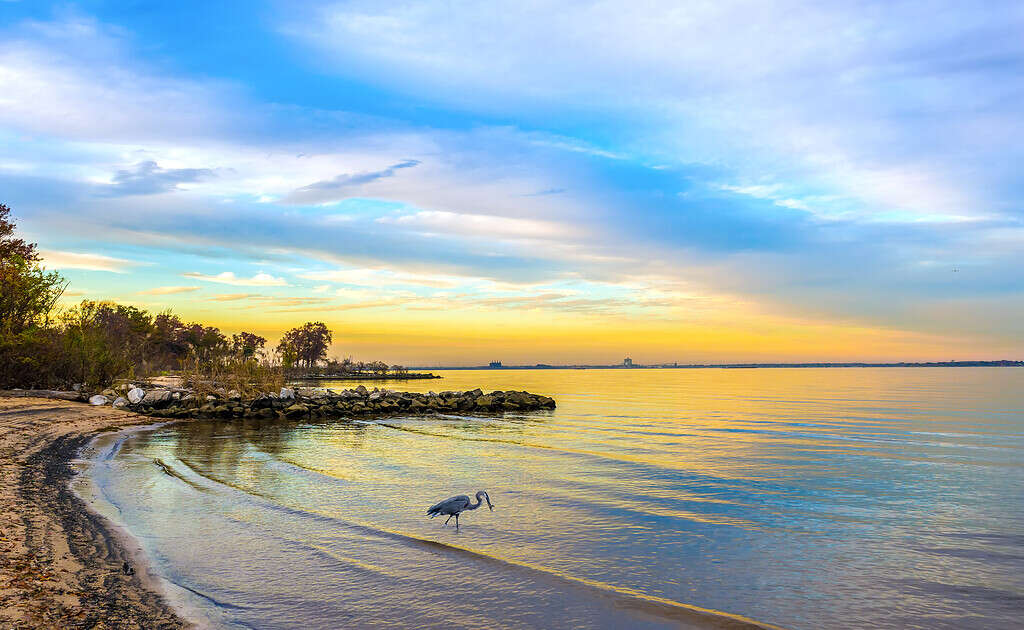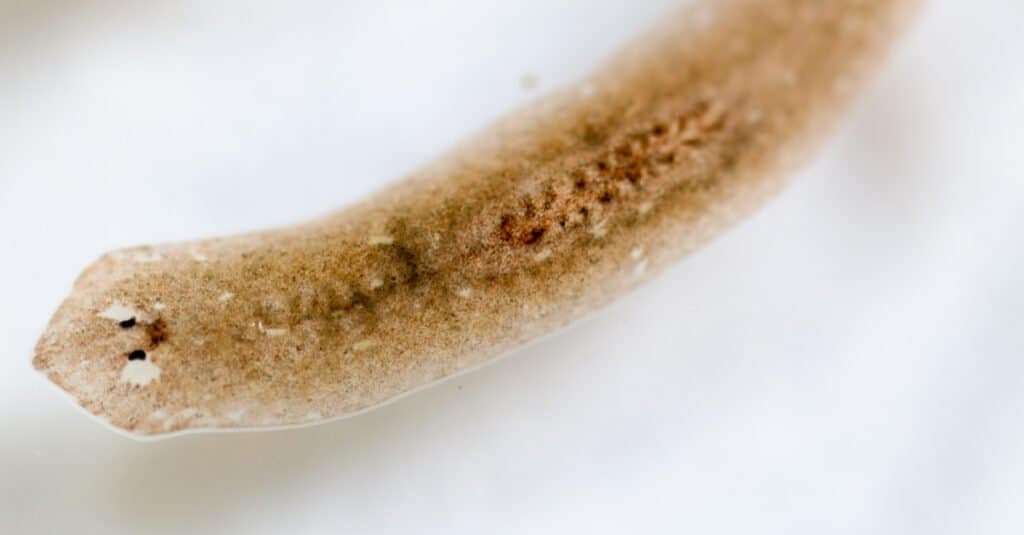When you think of life in a large body of water, there are likely many animals you think of, depending on the type of water. In an area like the Chesapeake Bay that has areas of both salt- and freshwater, you’re likely to find many unique species home both to inland areas and the ocean. However, what lives at the bottom of the Chesapeake Bay?
Chances are, if you’re wondering what lives in the Chesapeake Bay, you’re not looking at the very bottom of this estuary. However, there is an abundance of life to be found here—some that might just surprise you.
Ready to learn what lives at the bottom of the Chesapeake bay?
Let’s dive in!
About the Chesapeake Bay

The Chesapeake Bay is the third-largest estuary in the United States.
©Keri Delaney/Shutterstock.com
The Chesapeake Bay is the largest estuary in all of the United States. It is the third-largest in the entire world. An estuary is a unique body of water: it is coastal water contained in a semi-enclosed area where it can mix with inland fresh water. The result is brackish water that can allow a wide variety of species to thrive.
The Chesapeake Bay can be traced back to 35 million years ago. During this time period, a bolide, which is similar to a meteor, struck the Earth and created a crater. This also changed the course of nearby rivers. However, the Chesapeake Bay, as we know it today, didn’t come to exist until around 10,000 years ago, when the Susquehanna River Valley became flooded by the water of melted glaciers.
The name of this Bay comes from the Algonquian word Chesapiooc.
What Lives at the Bottom of the Chesapeake Bay?

Chesapeake Bay includes a variety of organisms, both around the surface and underwater, including benthos.
©iStock.com/flownaksala
Taking a dive through the waters of the Chesapeake Bay will expose you to a wide variety of animals and plant life. From ducks to horseshoe crabs to up to 12 different species of shark, there is no end of species you may find here. However, what lives at the bottom of the Chesapeake Bay?
This involves learning about benthos.
What are Benthos?
Benthos are also known as benthon. This refers to the community of organisms, known as benthic organisms, living in the benthic zone, or the area at the bottom of a body of water.
There are many different ways to sort and understand benthos. One of the most common ways is through size, which includes macrobenthos like sea grass, meiobenthos like copepods, and microbenthos like diatoms.
However, you can also sort by location and type.
What are Benthos Important?
Benthos are an important part of not only the ecosystem of the bottom of the Chesapeake Bay but also the entire bay. They are a significant part of the food web, and they can act as an indicator of the overall health of the ecosystem. Benthos can break down decaying organic materials and return the nutrients to the environment, helping to prevent imbalance.
A healthy benthic community will include organisms sitting directly at the bottom of the Chesapeake Bay as well as those that spend the majority of their time in the bottom soil.
Benthic Organisms at the Bottom of the Chesapeake Bay

A variety of organisms, including the flatworm, live at the bottom of the Chesapeake Bay.
©Rattiya Thongdumhyu/Shutterstock.com
Examples of benthos include clams, worms, oysters, mussels, plants, microorganisms, and additional organisms.
Some of the organisms that can be found at the bottom of the Chesapeake Bay include:
- Black-fingered mud crab
- Atlantic oyster drill
- Sea squirts
- Atlantic mud worm
- Ivory barnacle
- Oyster spat
- American oyster
- Skilletfish
- Hard clam
- Common clam worm
- Red ribbon worm
- Soft-shelled clam
- Glass tube worm
- Flatworm
- Snails
3 Rare Animals in the Chesapeake Bay

You may spot the North Atlantic right whale on the Chesapeake Bay if you’re lucky.
©iStock.com/6381380
The bottom of the Cheseapeake Bay isn’t the only area worth checking out for interesting species. Here are three rare, endangered animals that also call the Chesapeake Bay home.
Dwarf Wedge Mussel
The dwarf wedge mussels in a freshwater mussel. It is an endangered species. This species doesn’t tend to grow longer than around 1.5 inches in length.
North Atlantic Right Whale
The North Atlantic right whale is one of the most endangered larger whale species. Some studies suggest that there may be less than 350 of these whales left in the world. Right whales are baleen whales. They use specialized teeth to eat small prey like crustaceans.
In the late 1800s, these whales were hunted almost to the brink of extinction. Although their numbers have improved significantly in recent years, they still face the dire threat of fading from the world forever.
Leatherback Sea Turtle
The leatherback sea turtle is the largest of all living turtles. It is also the heaviest of reptiles, excluding crocodilian species. Adults can grow to be over 7 feet long and weigh as much as 1500 pounds!
When leatherback sea turtles are small, they face a wide variety of predators. However, once they reach their maximum adult size, sharks tend to be the only predator careful of breaking through their tough shell and making a meal of this gentle giant.
Where is the Chesapeake Bay Located on a Map?
The Chesapeake Bay holds the title of being the largest estuary in the United States. Nestled in the Mid-Atlantic region, this significant water body is primarily separated from the Atlantic Ocean by the Delmarva Peninsula, which encloses parts of the Eastern Shore of Maryland, the Eastern Shore of Virginia, and the state of Delaware.
Here is Chesapeake Bay on a map:
The photo featured at the top of this post is © Keri Delaney/Shutterstock.com
Thank you for reading! Have some feedback for us? Contact the AZ Animals editorial team.







